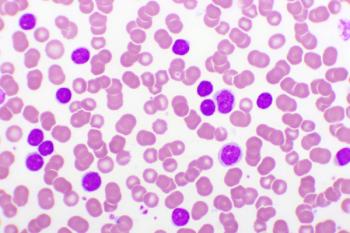
Gauging the Current Landscape for Treating Patients With Hidradenitis Suppurativa: Tiffany Mayo, MD
Tiffany Mayo, MD, discusses the emerging therapy landscape for treating patients with hidradenitis suppurativa.
Captions were auto-generated.
Hidradenitis suppurativa (HS) is a chronic, genetic inflammatory disease that targets the body’s sweat glands, often creating large and painful recurring boils.1 In an interview with The American Journal of Managed Care®, Tiffany Mayo, MD, board-certified dermatologist, associate professor of dermatology at the University of Alabama at Birmingham, and panelist at the
Diagnosis time for patients with HS can range anywhere from 7 to 10 years, Mayo said; however, it is sometimes longer for patients with skin of color. Often, patients with skin of color already have hyperpigmentation in areas where HS naturally occurs, and it is sometimes mistaken for other conditions by physicians who aren’t as experienced in recognizing HS on skin of color.
“Our goal is to decrease time to diagnosis so that patients understand the condition they have and then increase access to treatment,” Mayo said during her panel discussion on emerging therapies for HS at the Skin of Color Update on October 3. “And it turns out that there's a simple way to diagnose it. If you ask a patient this question, ‘Have you had at least 2 boils in the past 6 months in the classic locations?’ And if the answer is yes, the sensitivity is 90%, and the specificity is 97% of that patient actually having HS.”
Mayo made clear the importance of addressing the diagnosis threshold for HS, which she believes will dramatically decrease the time to diagnosis, “from 7 to 10 years to maybe 1.” Additionally, she emphasizes the importance of tone when discussing this condition with patients, framing them and their actions as a part of the solution and not the problem.
“I really want us to kind of steer away from starting the conversation with a discussion about weight and away from the lifestyle things that put this burden of the disease and the reason for it on the patient to more of an understanding that it is a complex, dynamic condition that requires a complex treatment approach,” Mayo said during the panel discussion.
Comorbidities like obesity, type 2 diabetes, depression, and sexual dysfunction, Mayo said, are also present in patients with HS, and collaborating with other specialists outside of dermatology makes sure patient care is well-rounded and all patient concerns are properly addressed. And while there are numerous comorbidities associated with HS, Mayo emphasized the need to make sure patients understand that their comorbidities are not the cause of their HS and neither are they, but that it is a chronic inflammatory condition that can be managed with the right tools and proper treatments.
Mayo also described some HS cases she has treated and how she managed each one differently and catered to the needs and desires of that patient, while also maintaining an effective and manageable course of action for each of them, whether that be switching to oral medications, trying dual biologic therapy, or treating patients experiencing severe flares.
“What I really want to point out is that it's important for us to make sure our patients know there is more to come,” she said during the panel discussion. “So even if we're not quite hitting the nail on the head with the current treatment options, there's more to come.”
Reference
1. Hidradenitis suppurativa (acne inversa): symptoms & treatments. Cleveland Clinic. December 20, 2022. Accessed October 8, 2025.
Newsletter
Stay ahead of policy, cost, and value—subscribe to AJMC for expert insights at the intersection of clinical care and health economics.









































